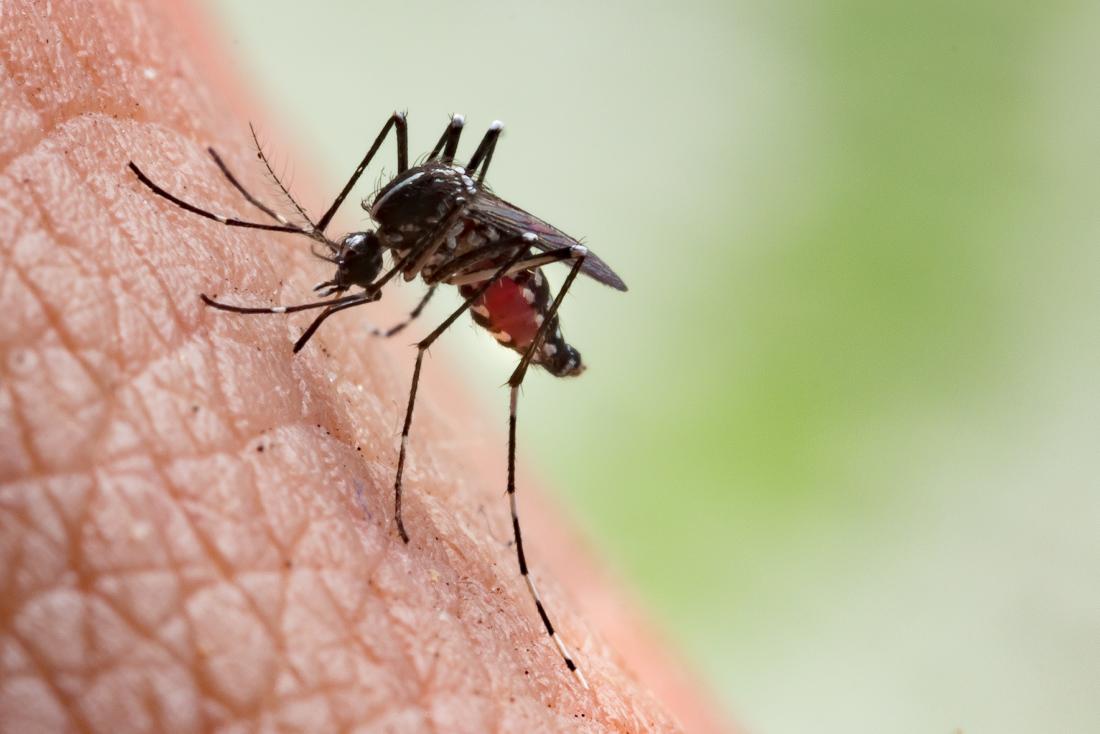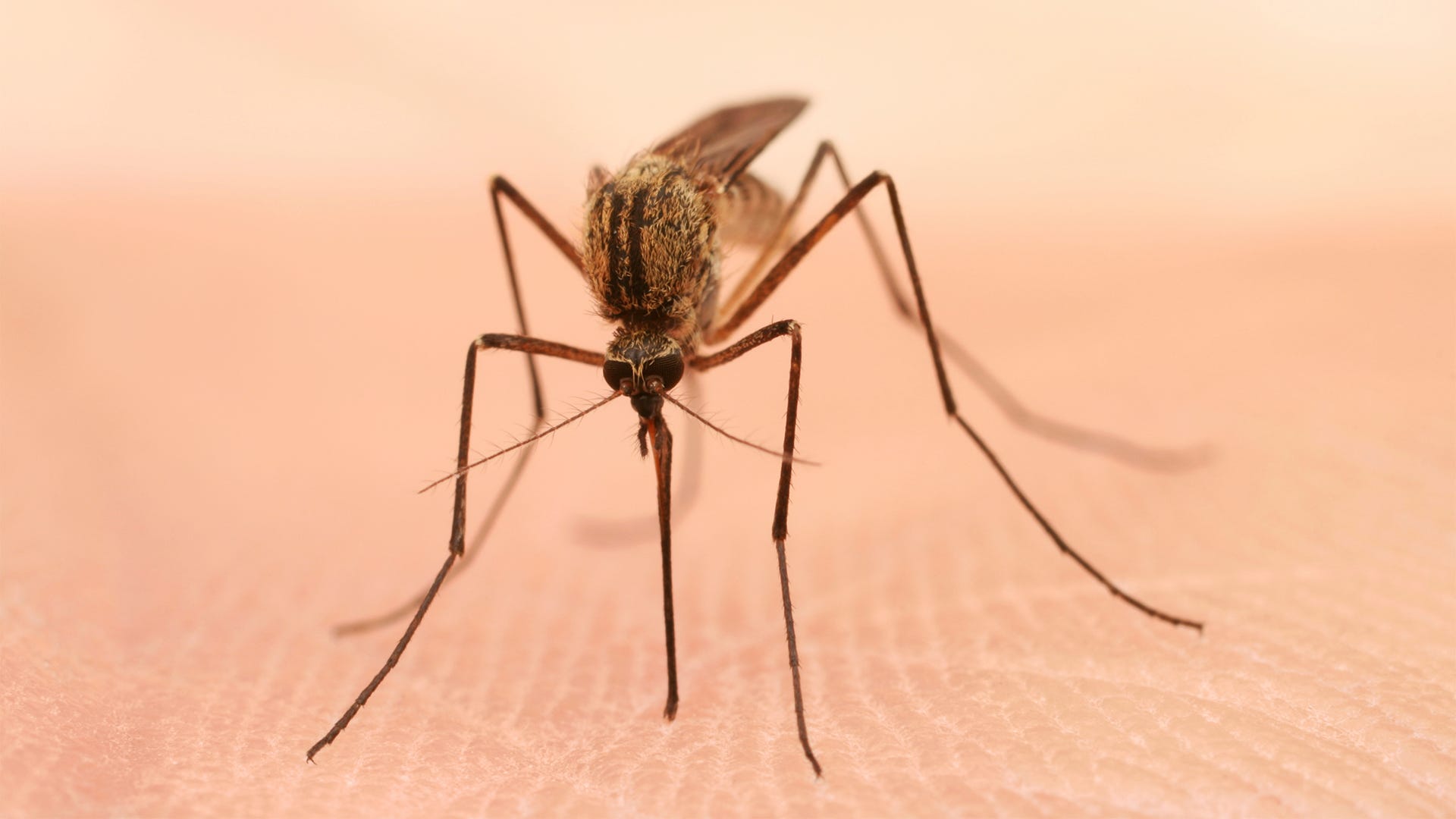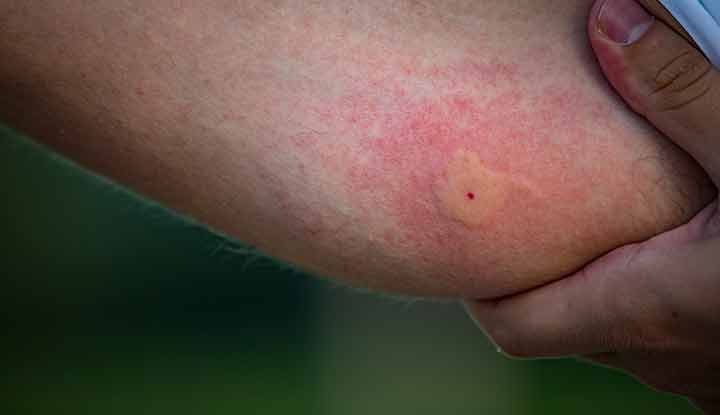Mosquitoes use body heat and taste sensors in their legs to find and bite humans. They are attracted to the chemicals in our blood, guiding them to our blood vessels like a scent trail.
Mosquitoes can sense human odor, body heat, and taste our skin to pinpoint the perfect spot for a bite. Additionally, they have taste receptors on their feet and tongue, allowing them to taste the host before biting. Researchers have found that even in the absence of carbon dioxide, mosquitoes are still drawn to human skin.
Understanding how mosquitoes locate and bite humans sheds light on their feeding behavior and the ways in which we can protect ourselves from these pesky insects.
The Mosquito’s Quest For Blood
Mosquitoes have a keen sense of smell and taste, which enables them to locate and bite their prey. They detect carbon dioxide and heat emitted by the human body, as well as certain chemicals in our sweat and breath. Once they land on our skin, they use taste sensors in their legs to find a suitable spot to bite.
Sensory Tricks For Locating Humans
Mosquitoes may seem like tiny, pesky creatures, but they possess an incredible ability to locate humans for their blood meals. These buzzing insects rely on a combination of sensory tricks to pinpoint their next victim. From sensing body heat to detecting the bouquet of smells emitted by our blood vessels, mosquitoes have evolved remarkable strategies to find us.Body Heat: A Guiding Signal
One of the primary ways mosquitoes locate humans is through the detection of body heat. These bloodsucking insects have specialized sensors called thermal receptors that can detect the heat radiating from our bodies. As we go about our daily activities, our bodies emit infrared radiation, creating a temperature gradient that mosquitoes can sense. Once they detect this heat, mosquitoes are drawn closer to their target.Once in close proximity, mosquitoes use additional sensory cues to narrow down their search.Taste Sensors In The Legs
After landing on a potential host, mosquitoes utilize taste sensors in their legs to find the perfect spot to bite. These taste receptors allow them to assess the chemical composition of the skin and determine the most suitable location for feeding. By tasting the skin, mosquitoes can also detect the presence of certain chemicals that may make an individual more attractive or repellant to them.The combination of sensing body heat and tasting the skin helps mosquitoes make the final decision on where to take their blood meal. Unfortunately for us, this often results in those itchy, irritating bites we all dread.So the next time you find yourself swatting away mosquitoes, remember that these tiny insects have an array of sensory tricks up their sleeves. From detecting our body heat to using taste sensors in their legs, mosquitoes have evolved to be efficient bloodsuckers. Understanding their methods can help us develop better strategies to protect ourselves from their bites.Sources: – Deep Look | How Mosquitoes Use Six Needles to Suck Your Blood – PBS – Do mosquitos actually bite some people more than others? – TED-Ed – How do mosquitoes know where your veins are? – Houston Methodist – How Mosquitoes Use Six Needles to Suck Your Blood – KQED – What smell do mosquitoes hate the most? – Science.org – How Mosquitoes Sniff Out Human Sweat To Find Us – NPR – How mosquitoes tell the difference between animal and human blood – NIH MedlinePlusStealthy Predators With Delicate Tools
The Six-needle Technique
Mosquitoes are equipped with an intricate six-needle system that enables them to efficiently locate blood vessels under the skin. This remarkable technique involves a delicate and precise process that allows mosquitoes to pierce the skin, locate blood vessels, and extract blood without causing significant disruption to their human or animal hosts.
Proboscis: More Than Just A Needle
The proboscis of a mosquito is not just a simple needle; it is a multifunctional tool that facilitates the blood-feeding process. It consists of a sophisticated arrangement of components that enable the mosquito to sense body heat, detect chemical cues, and taste the skin to identify the ideal location for biting.
Chemical Lure: Blood’s Invisible Trail
Mosquitoes use a chemical lure to follow the “bouquet of smells” emitted by our blood to find their target. Once landed on a human, they use their taste sensors in their legs to locate the right spot to bite.
Blood Chemistry: A Mosquito’s Map
Mosquitoes are notorious for their ability to locate their next blood meal with precision. But have you ever wondered how these pesky insects know exactly where to bite? The answer lies in their remarkable ability to detect the chemical lure of blood’s invisible trail.
When a mosquito is in search of a blood meal, it relies on a combination of sensory cues to guide its path. One critical factor is the blood chemistry, which acts as a map for the mosquito’s journey. Our blood contains a unique blend of chemical compounds that serve as a calling card for these buzzing creatures.
The mosquito’s finely tuned sense of smell enables it to detect the chemical signatures emitted by our blood. As the mosquito hovers near, it picks up on a “bouquet of smells” that wafts up from our skin. These chemical signals act as a trail, guiding the mosquito towards the source of the irresistible blood meal.
Research conducted by UC Davis biochemist Walter Leal has shed light on this fascinating process. Leal’s lab discovered that mosquitoes possess receptors that specifically respond to the chemicals present in our blood. These receptors act as a compass, leading the mosquito to the blood vessel with uncanny accuracy.
The Role Of Carbon Dioxide In Detection
While blood chemistry plays a crucial role in attracting mosquitoes, it is not the sole factor that guides their path. Carbon dioxide (CO2) also plays a significant role in their detection system.
When we exhale, we release a plume of carbon dioxide into the air. Mosquitoes are highly attuned to this gas and can sense it from a considerable distance. The presence of carbon dioxide acts as a beacon, drawing the mosquito closer to its potential meal.
But how do mosquitoes know where to find the source of carbon dioxide? These crafty insects have specialized receptors that can detect carbon dioxide from afar. As they fly towards the source, they use a combination of visual cues and their ability to sense body heat to zero in on their target.
Once the mosquito lands on our skin, it uses its taste sensors in the legs to further refine its search for the perfect spot to bite. These sensors allow the mosquito to taste our skin and identify the optimal location for extracting a blood meal.
So, the next time you find yourself swatting away mosquitoes, remember that their ability to locate their next meal is not a matter of chance. It is a result of their remarkable sensitivity to the chemical lure of blood’s invisible trail, combined with their keen detection of carbon dioxide. These tiny creatures have honed their hunting skills to perfection, making them a formidable adversary in the eternal battle against mosquito bites.

Credit: www.brandeis.edu
Visual Hunting Tactics
Mosquitoes have a sophisticated system for locating their next meal. They are drawn by body heat, then use taste sensors on their legs to pinpoint the perfect spot for a bite. The process is guided by the chemicals in our blood, leading them unerringly to a blood vessel.
The Importance Of Contrast
Mosquitoes are attracted to contrasts in colors and brightness. They use their vision to locate their prey by detecting variations in light and dark.
How Clothing Can Attract Or Repel
Wearing dark-colored clothing can make you more appealing to mosquitoes as they are drawn to contrasts in color. On the other hand, light-colored and loose-fitting clothing can help deter mosquitoes by reducing visual cues that attract them.
Taste Testing With Legs And Tongue
Mosquitoes have a fascinating way of knowing where to bite. They use their sense of body heat to find a suitable target. Once they land on you, they use taste sensors in their legs to locate the perfect spot to bite.
It’s an intricate process that allows them to feed on our blood.
Taste Testing with Legs and TongueHave you ever wondered how mosquitoes know where to bite? The answer lies in their keen sense of taste. As the mosquito lands on your skin, it begins to use its taste sensors to find the perfect spot to bite. But did you know that these taste sensors are located not only in the mosquito’s mouth but also in its legs? Let’s explore the fascinating process of how mosquitoes use their legs and tongue for taste testing before deciding where to bite.Legs as Taste SensorsMosquitoes have taste receptors in their legs that help them determine the best place to bite. These receptors are highly sensitive to certain chemicals, such as lactic acid and ammonia, which are found in human sweat. When the mosquito lands on your skin, it uses its legs to taste the surrounding area and find the most desirable spot to bite.The Decision to Bite: A Taste ProcessOnce the mosquito has landed on your skin and used its legs to do some initial taste testing, it then uses its tongue to further assess the area. The mosquito’s tongue, called a proboscis, is made up of six needle-like structures that work together to pierce the skin and suck blood. Before it begins to feed, the mosquito uses its tongue to taste the area again to ensure that it has found the best spot to bite.In conclusion, mosquitoes use both their legs and tongue for taste testing before deciding where to bite. Their highly sensitive taste receptors help them locate the perfect spot to feed on human blood. While it may seem like mosquitoes are randomly biting us, they are actually using a sophisticated taste process to find the best spot to feed.
Credit: www.medicalnewstoday.com
The Human-specific Attraction
Mosquitoes are experts at finding the perfect spot to bite, thanks to their keen senses. They are attracted to the heat and odors emitted by our bodies, using taste sensors in their legs to locate the best place to bite and feed on our blood.
Why Mosquitoes Prefer Humans
The Human-Specific Attraction is one of the most interesting aspects of mosquito behavior. Mosquitoes seem to have a preference for human blood over the blood of other animals. But why is that?One reason why mosquitoes prefer humans is because of the unique scent that human skin emits. Mosquitoes are attracted to the odor of certain chemicals found in human sweat. These chemicals include lactic acid, ammonia, and uric acid.Another reason why mosquitoes prefer humans is because of the warmth that our bodies produce. Mosquitoes are attracted to heat, and human bodies are usually warmer than other animals. This is why mosquitoes tend to bite us in areas where blood vessels are close to the skin’s surface, such as the wrists, ankles, and neck.Attraction Beyond Carbon Dioxide
While carbon dioxide is the primary attractant for mosquitoes, it is not the only one. Mosquitoes are also attracted to other chemicals, such as lactic acid, which is found in sweat. In fact, research has shown that mosquitoes can detect these chemicals from up to 100 feet away.Mosquitoes are also attracted to the color of our clothing. Dark colors, such as black and blue, are more attractive to mosquitoes than lighter colors. This is because mosquitoes use vision to locate their prey, and dark colors provide a greater contrast against the surrounding environment.Additionally, mosquitoes are attracted to the movement of their prey. This is why they are more likely to bite people who are moving around, rather than those who are still.In conclusion, while carbon dioxide is the primary attractant for mosquitoes, there are many other factors that can influence their behavior. By understanding these factors, we can take steps to protect ourselves from mosquito bites and reduce our risk of contracting mosquito-borne illnesses.Natural Repellents And Their Efficacy
Mosquitoes are known for their annoying bites, but there are natural repellents that can help keep them at bay. Understanding the efficacy of these repellents and how to create a mosquito-repellent environment can make a significant difference in minimizing mosquito bites.
Plants That Mosquitoes Hate
There are several plants that mosquitoes dislike due to their strong scents. Incorporating these plants into your outdoor space can help deter mosquitoes naturally. Some of these plants include:
- Lavender
- Citronella
- Peppermint
- Lemon balm
- Basil
Creating A Mosquito-repellent Environment
In addition to planting mosquito-repelling plants, there are other measures you can take to create a hostile environment for mosquitoes. These include:
- Removing standing water where mosquitoes breed
- Using citronella candles or torches
- Installing screens on windows and doors
- Wearing light-colored clothing
- Using mosquito nets when sleeping outdoors “`
Understanding Mosquito Preferences
Why Some People Get Bitten More
Mosquitoes seem to have a preference for certain individuals, leaving others relatively untouched. Research suggests that several factors contribute to this phenomenon, including body odor, carbon dioxide emission, and even genetic factors.
The Genetic Factor In Mosquito Attraction
Studies have shown that genetics play a role in determining an individual’s attractiveness to mosquitoes. Certain genes can influence the production of chemicals and compounds in the body that either repel or attract mosquitoes. This genetic predisposition can make some people more prone to mosquito bites than others.

Credit: www.mosquitomagnet.com
Frequently Asked Questions
How Do Mosquitoes Choose Where To Bite?
Mosquitoes choose where to bite based on several factors. First, they are attracted to the carbon dioxide we exhale. They also sense our body heat to locate us. Once they land on our skin, they use taste sensors in their legs to find the right spot to bite.
They are guided by the chemicals in our blood, which create a scent that leads them to our blood vessels.
How Do Mosquitoes Know Where Your Veins Are?
Mosquitoes detect veins by sensing chemicals in our blood, guiding them to the blood vessel.
What Smell Do Mosquitoes Hate The Most?
Mosquitoes hate the smell of citronella, peppermint, cedar, catnip, patchouli, lemongrass, and lavender.
Conclusion
Mosquitoes use a combination of sensory abilities to locate and bite humans. They are attracted to body heat, carbon dioxide, and the unique scent of human skin. Additionally, they use taste sensors in their legs to find the ideal spot to bite.
Understanding these mechanisms can help in developing effective mosquito repellents.
Related posts:

I’m MD Tanvir, and I bring years of expertise gained from working closely with pest control companies to the forefront. My journey in the industry has inspired me to launch Bug Battler, a platform aimed at equipping people with the know-how to combat pests autonomously. Through Bug Battler, I aim to empower individuals with practical insights to tackle pest infestations effectively.

